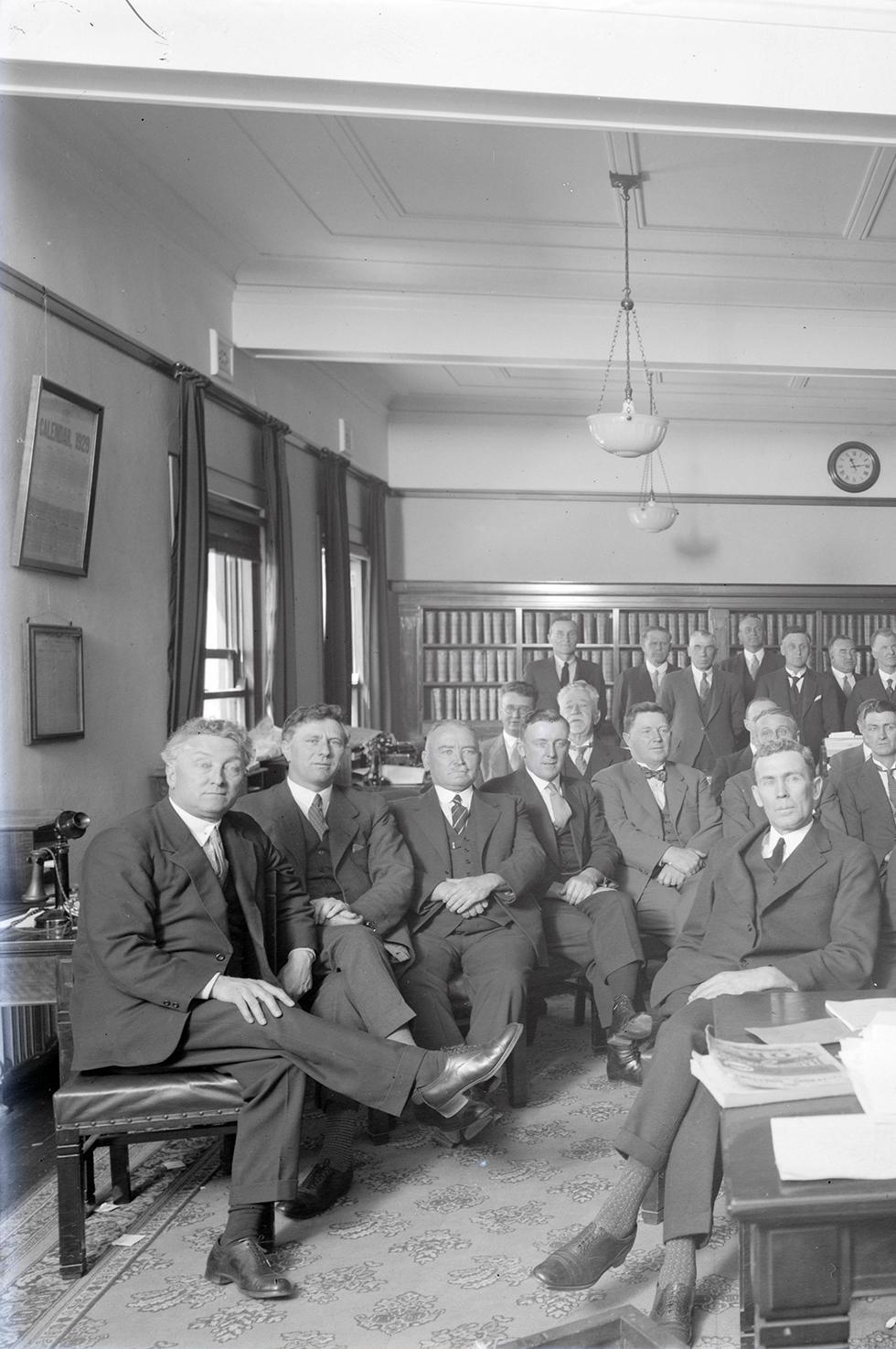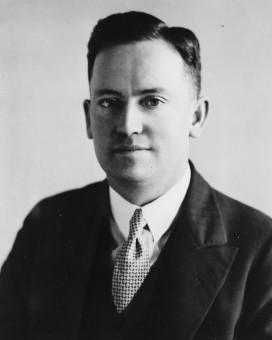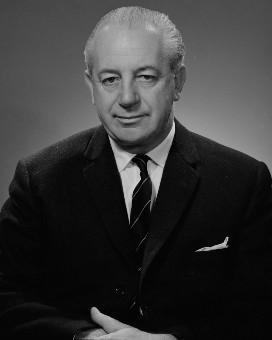Joseph Benedict (Ben) Chifley contested the seat of Macquarie in 10 federal elections over 25 years. He lost 3 elections, in 1925, 1931 and 1934. He won the seat in 1928 and 1929, then won it back in 1940. He held the seat of Macquarie through the 5 federal elections from 1940 until his death 2 months after the 1951 election.

The Labor Caucus, assembled at Parliament House on 21 October 1929 to elect the members of the Cabinet of James Scullin. Neither Ben Chifley nor John Curtin (both seated at the desk) was included, but Joseph Lyons (seated left) was among the 9 ministers elected. NAA: A3560, 6120
14 November 1925
Chifley stood unsuccessfully for the seat of Macquarie, won from the Labor Party in 1922 by Country Party candidate Arthur Manning and retained by Manning at this election. The coalition government led by Stanley Bruce was impressively returned with 37 Nationalist and 14 Country Party seats in the House of Representatives, with 23 Labor seats and 1 Independent. In the Senate, 18 Nationalist and 4 Country Party Senators were elected. This was the first federal election where voting was compulsory, and over 90% of those eligible voted.
17 November 1928
Chifley won Macquarie from sitting member Arthur Manning at this election, but the Nationalist–Country Party coalition government held office. The House of Representatives comprised 29 Nationalists, 13 Country Party, 1 ‘Country Progressive Party’, 1 Independent and 31 Labor members. In the Senate, Labor won 7 seats, the Nationalist Party 10 and the Country Party 2.
12 October 1929
Chifley quadrupled his majority in Macquarie when a Labor government led by James Scullin was returned in this ‘landslide’ election. Labor won 46 seats to 14 Nationalists and 10 Country Party seats in this House of Representatives election. There were also 3 ‘Independent Nationalists’ and 1 Independent.
19 December 1931
Chifley lost his seat of Macquarie to conservative candidate John Lawson when the Scullin government fell after a split in the Labor Party. Labor held 14 seats and the ‘Lang’ Labor group won 4. The new United Australia Party, led by Joseph Lyons after his defection from the Labor Party, won 34 seats and there were 16 Country Party seats and 1 Independent. In the Senate, the United Australia Party won 15 seats and Labor 3. This was the first federal election contested by the Communist Party.
15 September 1934
After a cold and wet winter campaign in his Macquarie electorate, Chifley failed to win the seat, one of 28 won by the United Australia Party. The Lyons government remained in office, with the United Australia Party holding 28 seats and the Country Party 14 seats in the House of Representatives, while Labor won 18 and ‘Lang’ Labor 9. In the Senate, the United Australia Party won 16 seats and the Country Party 2.
21 September 1940
After failing to gain pre-selection for the 1937 election, Chifley won Macquarie back for Labor in 1940. The United Australia Party, led by Robert Menzies after the death of Joseph Lyons the previous year, narrowly retained a coalition government. The United Australia Party won only 23 seats to Labor’s 32. The Country Party won 14 seats and the ‘Lang Labor’ – Non-Communist Labor Party won 4. There was also 1 Independent in the House of Representatives. The United Australia Party and Country Party won 16 Senate seats, and Labor won 3.
On 28 August 1941, Menzies was replaced as leader of the United Australia Party, and Country Party leader Arthur Fadden became Prime Minister. Fadden was unable to retain majority support in the House of Representatives and, on 7 October 1941, John Curtin became Prime Minister of Australia.
21 August 1943
Chifley held Macquarie, winning a massive 65% of the vote. The Curtin government was also returned with a convincing majority. In the House of Representatives, Labor won 49 seats, the United Australia Party 12, the Country Party 7 and the ‘Liberal Country Party’ 1, the Country National Party 1, the Liberal Country Party (Victoria) 1, the Queensland Country Party 1, with 1 Independent. The Labor Party also won all 19 Senate seats contested.
On 5 July 1945, John Curtin died and, after being elected party leader, Ben Chifley became Prime Minister on 13 July 1945.
28 September 1946
Chifley contested this election as Prime Minister, holding his seat of Macquarie and leading the party to a strong win. Labor won 43 House of Representatives seats, with 15 won by Robert Menzies’ new Liberal Party and 11 by the Country Party. The splinter Country Party groups in the states won a total of 3 seats and Lang Labor won 1. In the Senate, Labor won 16 seats and the Liberal–Country Party alliance won 3 seats.
10 December 1949
Chifley held his seat, but lost government when the Liberal Party won 55 seats in the House of Representatives and the Country Party 19, to Labor’s 47 seats. The House of Representatives had been expanded that year from 75 seats to 121, and the Senate increased from 36 seats to 60. At this election, 42 Senate seats were contested, the Coalition winning 23 and Labor 19.
28 April 1951
In this double dissolution election, the Menzies government was returned with a reduced majority in the House of Representatives, but with control of the Senate. In the House, the Liberal Party won 52 seats to the Labor Party's 54, with the Country Party winning 17 seats. Of the 60 Senate seats, the Coalition won 32, Labor 28. Chifley again won Macquarie in this, his 10th and last federal election.
Sources
These brief election results relate only to this Prime Minister. They are drawn from the online sources below, where further information can be found.
Australian Electoral Commission: Election results
University of Western Australia: Australian Government and Politics Database





